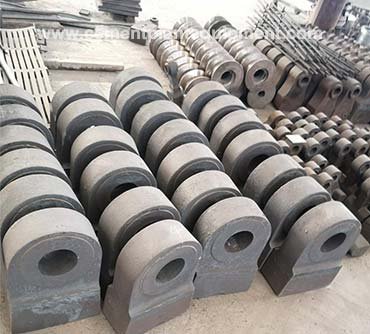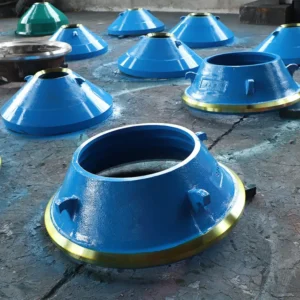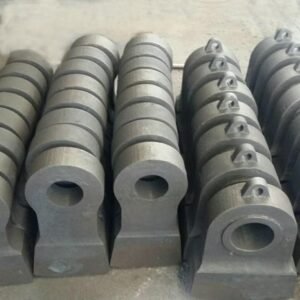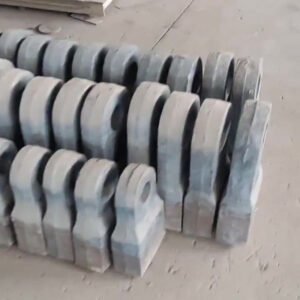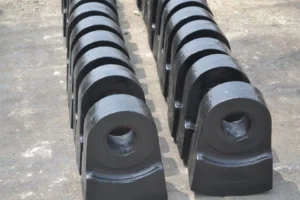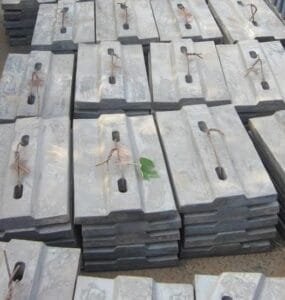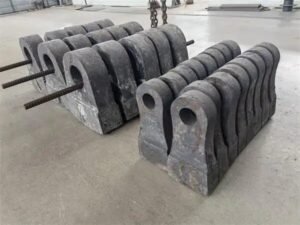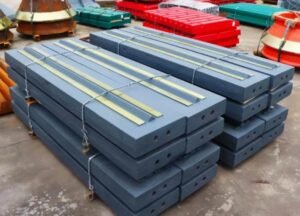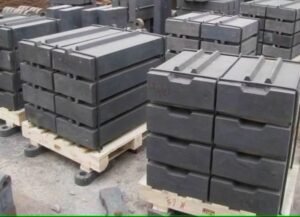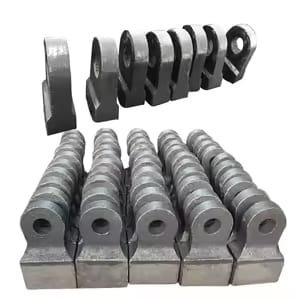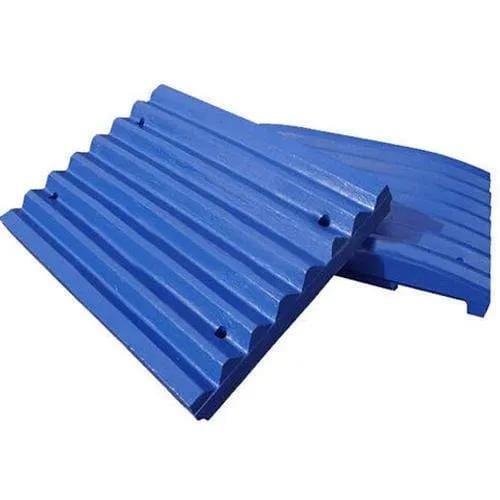Introduction
Choosing the right crusher hammer is crucial for ensuring optimal crushing performance and extending the lifespan of your crusher. The hammer plays a vital role in breaking down materials, and its quality directly affects productivity, efficiency, and operational costs. This guide will help you understand the different types of crusher hammers, the materials used in their production, and how to select the best option for your specific needs.
Types of Crusher Hammers
Crusher hammers come in various types, each designed for specific crushing applications. The primary types include:
1. Swing Hammers
Swing hammers are pivoted and swing freely during operation. They are commonly used in impact crushers and hammer mills, where they repeatedly strike materials to break them down.
2. Fixed Hammers
Fixed hammers are securely attached to the rotor and do not move independently. They provide high impact force and are ideal for heavy-duty crushing applications such as mining and cement production.
3. Claw Hammers
Claw hammers have a specialized design for specific applications, such as shredding and recycling. They feature claw-like projections that improve material grip and enhance crushing efficiency.
4. Tic Insert Hammers
Tungsten carbide (Tic) insert hammers incorporate carbide inserts in high-wear areas, significantly improving hardness and wear resistance. These hammers are suitable for high-abrasion applications.
Materials Used in Crusher Hammers
The material composition of a crusher hammer determines its durability, wear resistance, and impact strength. Below are the most commonly used materials:
1. Manganese Steel (Hadfield Steel)
Properties: High toughness, work-hardening ability, and resistance to impact wear.
Best For: Applications requiring high impact resistance, such as rock crushing and mining.
Pros: Excellent toughness, self-hardens over time.
Cons: Moderate wear resistance; may not be ideal for extremely abrasive materials.
2. High Chromium Cast Iron
Properties: High hardness, superior wear resistance, but lower toughness.
Best For: Crushing hard and abrasive materials, such as granite and basalt.
Pros: Excellent abrasion resistance, long lifespan.
Cons: Brittle and may crack under extreme impact.
3. Alloy Steel
Properties: A balanced combination of toughness, hardness, and wear resistance.
Best For: General-purpose crushing in various industries, including cement and aggregate production.
Pros: Good balance between toughness and hardness.
Cons: May not match the extreme wear resistance of high-chromium iron.
4. Tungsten Carbide Reinforced Hammers
Properties: Ultra-high hardness and excellent wear resistance.
Best For: High-abrasion environments, such as coal and mineral processing.
Pros: Superior longevity, minimal wear.
Cons: High cost.
How to Choose the Best Crusher Hammer
When selecting a crusher hammer, consider the following factors:
1. Material Hardness
Choose a hammer material that matches the hardness of the material being crushed. Harder materials require hammers with higher wear resistance.
2. Impact Resistance
For operations with high-impact loads, such as primary crushing, opt for manganese steel hammers.
3. Abrasiveness of Material
If the material is highly abrasive, high-chromium cast iron or tungsten carbide-reinforced hammers are ideal choices.
4. Operating Conditions
Consider temperature, humidity, and chemical exposure when selecting a hammer material. Alloy steels provide a good balance of properties for varied conditions.
5. Cost vs. Lifespan
Investing in high-quality hammers may have a higher upfront cost but will reduce downtime and maintenance costs in the long run.
Maintenance Tips for Crusher Hammers
To extend the lifespan of crusher hammers, follow these best practices:
Regular Inspection: Check for signs of wear, cracks, or deformation.
Proper Installation: Ensure hammers are securely fitted to prevent premature failure.
Balanced Rotors: Maintain rotor balance to prevent uneven wear.
Lubrication & Cooling: Use proper lubrication and cooling to minimize heat-related damage.
Timely Replacement: Replace hammers before excessive wear compromises performance.
Conclusion
Selecting the right crusher hammer is essential for achieving maximum efficiency and durability in your crushing operations. Understanding the different types, materials, and factors that affect hammer performance can help you make an informed decision. By choosing the best material for your application and following proper maintenance practices, you can significantly improve the longevity and efficiency of your crusher hammers.
If you are looking for high-quality crusher hammers, reach out to a reliable supplier with a proven track record in manufacturing durable and efficient wear parts.
